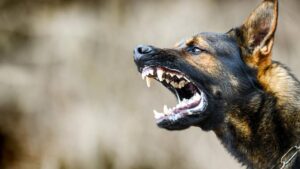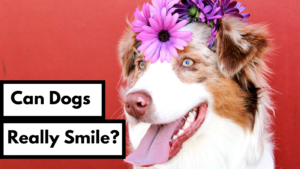The Scottish Deerhound is a storied breed that embodies elegance, endurance, and a quiet, dignified presence. Bred to chase mysterious game across the high moors of Scotland, this noble hound combines an athletic frame with a soft, affectionate temperament. If you’re searching for a dog that pairs impressive speed with a loyal, family-friendly demeanor, the Deerhound deserves your attention. This article explores the breed’s history, temperament, care needs, health considerations, exercise requirements, and why they remain a cherished symbol of Scottish heritage.
A Rich Heritage Rooted in the Highlands
The origins of the Scottish Deerhound lie deep in Scotland’s rural landscape, where nobility and commoners alike relied on swift, sturdy dogs to help manage deer populations. The breed’s tall, wiry silhouette and remarkable endurance reflect centuries of selective breeding for speed, stamina, and resilience in rugged terrain. Deerhounds were celebrated at royal tables and in clan stories, admired for their graceful gait and steady, compliant disposition. Today, the breed preserves that historic aura while thriving as a loyal companion in modern homes.
Appearance and Distinguishing Features
A Deerhound’s most striking attribute is its regal, imposing stature. Standing tall, with a lean, muscular build, the dog carries an air of effortless power. The coat is typically rough and wiry, designed to protect against bracing winds and cold weather. Most colorations range from blue-gray to pale fawn, often with a darker mask that accentuates the dog’s noble expression. The head is refined and elongated, with a soft, intelligent gaze that speaks to a companionable personality. Movement is fluid and buoyant, a testament to the breed’s athletic heritage.
Temperament: Gentle Giants with a Loyal Heart
Despite their formidable appearance, Scottish Deerhounds are known for their gentle, even-tempered nature. They tend to form deep bonds with their families and are especially affectionate with children when properly socialized. Deerhounds are typically calm indoors, preferring a quiet environment where they can stretch out after a brisk walk or a run. They are not as demanding as some high-energy breeds, but they do need regular exercise to satisfy their instincts and maintain health. Early socialization and positive reinforcement training help ensure they remain well-behaved around guests and other dogs.
Intelligence and Trainability
Deerhounds are intelligent and independent thinkers. They respond best to patient, positive training that respects their sensitive nature. They excel in activities that allow them to use their sight, scent, and speed in constructive ways. Because they can be somewhat reserved with unfamiliar people, consistent boundaries and gentle motivation are key. Training sessions should be short but frequent to keep a Deerhound engaged without overwhelming them. With the right approach, many Deerhounds become reliable, well-murred companions who can adapt to different living situations.
Care and Grooming Needs
Grooming for the Scottish Deerhound is relatively straightforward but requires regular attention. The wiry coat benefits from periodic brushing to remove loose hair and prevent matting, with more thorough grooming during seasonal shedding. Occasional hand-stripping or professional grooming helps maintain coat texture and overall health. The breed’s skin can be sensitive, so inspect folds and provide appropriate grooming products as needed. Dental care, nail trimming, and routine ear checks are essential parts of a comprehensive care routine.
Health Considerations: What Prospective Owners Should Know
Like all breeds, Deerhounds come with specific health considerations. Responsible breeders screen for common conditions and provide a health history to prospective owners. Some issues to be aware of include:
- Orthopedic concerns: Hip dysplasia and elbow dysplasia can affect Deerhounds, so maintaining a healthy weight and providing appropriate exercise is important for joint health.
- Heart health: Some Deerhounds may be prone to heart conditions, including cardiomyopathy, so regular veterinary checkups are vital.
- Bloat and gastric torsion: Like many deep-chested breeds, Deerhounds may be at risk for gastric issues. Slow, measured feeding and avoiding vigorous activity immediately after meals can help reduce risk.
- Eye health: Progressive retinal atrophy and other inherited eye conditions can occur, underscoring the value of regular veterinary eye examinations.
- Cancer risk: As with many large breeds, monitoring for lumps, changes in skin, and routine cancer screenings can aid early detection.
The Lifespan and Exercise Balance
Scottish Deerhounds are a long-legged, athletic breed capable of impressive speed. They require daily exercise that satisfies their instinct to chase while also accommodating their royalty-level need for rest. A combination of brisk walks, supervised runs in a secure area, and opportunities to sprint in open space suits their stamina. However, Deerhounds also need ample downtime to recover after exercise, so a spacious indoor environment and a comfortable bed are essential. With thoughtful planning, they thrive in homes that offer both physical outlets and serene moments of companionship.
Living with a Deerhound: Space, Environment, and Family Fit
The breed is best suited to homes with moderate-to-large living spaces and access to a secure yard for supervised outings. While Deerhounds are generally good apartment dogs when their exercise needs are met, their size and energy mean more comfortable living in homes with room to roam. They are typically good with children when socialized from a young age, though their considerable height and weight mean supervision around toddlers is prudent. Because they’re relatively calm indoors, Deerhounds can adapt well to family life, but they benefit from routines and predictable schedules that help ease transitions throughout the day.
Nutrition and Weight Management
A well-balanced diet tailored to a Deerhound’s age, activity level, and metabolism supports overall health. Larger breeds often benefit from diets formulated for large dogs, with attention to joint-supportive nutrients such as glucosamine and chondroitin, as recommended by a veterinarian. Portion control is important to maintain a healthy weight and reduce strain on joints. Fresh water should always be available, and treats should be counted toward daily caloric intake. Regularly review feeding guidelines as the dog matures, since energy needs can shift with growth and activity changes.
Training and Socialization: Building a Trusting Bond
Training a Scottish Deerhound requires patience, consistency, and empathy. They respond best to positive reinforcement techniques, including praise, rewards, and play. Socialization from puppyhood helps them feel comfortable around people and other animals. Because they can be reserved with strangers, exposing them gradually to varied environments, parks, markets, and busy streets, helps reduce shyness. Crate training can provide a secure space for rest and safety, while ongoing reinforcement of basic commands supports predictable behavior in social settings.
Grooming Essentials for the Deerhound
A regular grooming routine keeps the coat healthy and the skin comfortable. Brush several times a week to remove loose hair and prevent matting, paying attention to areas where fur can become tangled. Some owners prefer a more thorough, professional grooming a few times a year to maintain coat texture and remove dead hair. Bathing is typically infrequent unless the dog becomes dirty after outdoor activity. Routine checks of ears, teeth, and nails complete the grooming regimen and support overall health.
Travel and Outdoor Adventures
Deerhounds adapt well to families who enjoy outdoor activities. They can accompany you on long hikes, coastal rambles, and scenic road trips, provided the itinerary includes ample rest and opportunities to stretch their legs. When traveling, ensure comfortable travel arrangements, access to water, and opportunities for bathroom breaks. Their calm temperament often makes them good travel companions, but their sensitive nature benefits from a stable and reassuring presence during new environments and routines.
Finding a Deerhound: Responsible Breeding and Adoption
If you’re considering adding a Deerhound to your family, seek responsible breeders who prioritize health testing and temperament. Reputable breeders screen for hip dysplasia, heart conditions, eye disorders, and other breed-specific concerns. Adopting from rescue groups or breed-specific rescues is another compassionate option, and many Deerhounds in need of homes would thrive in a loving environment with experienced guidance. Ask questions about lineage, socialization, and the dog’s daily routine to ensure a strong match with your lifestyle.
Why the Scottish Deerhound Remains a Timeless Icon
The Scottish Deerhound embodies a fusion of athletic prowess and gentle companionship. Their presence signals a life rich in outdoor exploration while offering a devoted, steady, and affectionate family member. For the right owner, a Deerhound brings balance, a calm, regal presence at home and a quick, responsive partner on the trail or in the field. Their legacy in Scottish culture endures, and with responsible care, they can continue to inspire admiration for generations to come.
Conclusion: A Noble Companion with Enduring Appeal
In sum, the Scottish Deerhound is more than a striking appearance or a storied lineage. It is a living embodiment of balance, speed and serenity, power and gentleness, independence and loyalty. Prospective owners who appreciate a dog with an aristocratic bearing yet a warm heart will find in the Deerhound a partner capable of enriching daily life with grace, resilience, and unwavering devotion. With thoughtful care, consistent training, and a commitment to health and well-being, the Deerhound can flourish as a beloved member of a modern family.









